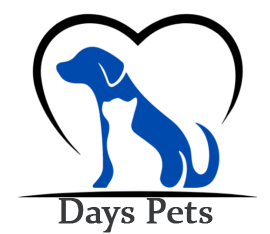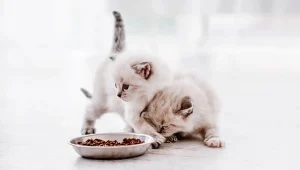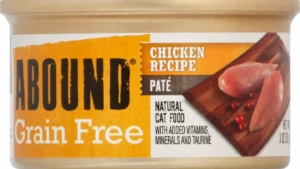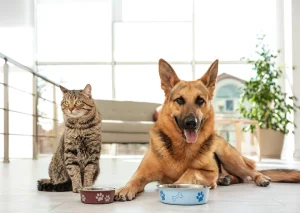When we think about the world of pet food, it’s easy to focus mainly on flavor—after all, whether you’re formulating a feline’s next gourmet meal or a straightforward kibble for an active pup, taste usually comes first. But behind that delightfully savory or meaty aroma your pet craves lies a less-discussed factor: palatants. These specialized ingredients don’t just influence taste; they can alter the texture, kibble shape, and overall eating experience for pets. Today’s manufacturers face a growing demand for unique textures, crunch profiles, and shapes that can stand out on the shelf. Palatants play a direct and often surprising role in these product attributes.
As the global pet food market continues to expand, with estimates from Grand View Research projecting it to reach USD 139.29 billion by 2030, it’s not enough to rely on flavor alone. Texture, appearance, and kibble shape are emerging as key differentiators—elements that can quietly encourage repeat purchases and enhance brand reputation. In 2023, more than 70% of pet owners surveyed by Pet Food Industry Publications reported they noticed a difference in their pet’s enthusiasm for meals that offered a more appealing texture or a distinctive shape. Palatants, acting as a sort of hidden architect, can provide these subtle yet significant differentiations.
In this in-depth exploration, we’ll dive into what palatants are, how they affect texture and shape, and what research says about their evolving role in modern pet nutrition. We’ll also walk through current industry trends, practical considerations for manufacturers, and future innovations that aim to improve both palatability and product presentation. By the end, you’ll have a better understanding of these powerful enhancers—and why they matter far beyond just taste.
(For further details on the science and application of pet food palatants, visit ProfyPet’s resource page.)
Understanding Pet Food Palatants: Beyond Flavor
What Are Palatants?
Palatants are specialized ingredients added to pet foods—both wet and dry—that improve the taste, smell, and overall eating experience. They’re often derived from proteinaceous ingredients like poultry, fish, or meat by-products. These substances might be enzymatically hydrolyzed proteins, yeast extracts, or even proprietary blends designed for specific species. The goal is to make the food more attractive, ensuring that dogs and cats, known for their sometimes finicky eating habits, find the meal irresistible.
While flavor enhancement is the obvious function of palatants, their influence goes deeper. By interacting with the base ingredients of the kibble or treat, palatants can affect how the moisture is retained, how the kibble’s surface interacts with saliva, and even how the food’s shape holds up during processing. This interplay can lead to distinct textural attributes—like crispiness for a kibble or softer chewiness for a treat—ultimately contributing to a more enjoyable feeding experience.
The Science Behind Palatants: Keys to Texture and Kibble Structure
To understand how palatants impact texture, you need to consider their composition. Palatants often contain amino acids, short-chain peptides, fats, and other compounds that influence the mouthfeel and breakdown of kibble. For instance:
Protein Hydrolysates: These contribute to “umami” flavors and can bind with starches and other kibble components, affecting how they swell and set during cooking and extrusion.
Fat and Oil Components: These can coat the kibble surface, not only improving aroma release when a pet bites down but also affecting the crunchy texture by altering the product’s porosity.
Yeast Extracts: Known for their savory notes, these can create a different mouthfeel. Yeast-derived compounds can sometimes give a denser chew due to their binding tendencies.
Consider how these interactions influence shape. Palatants added pre-extrusion (in the dough) can alter the viscosity of the mixture. This may cause slight differences in how the dough expands and shapes as it passes through the extruder, impacting final kibble shape and size. Post-extrusion applications—like coating the kibble—add another layer of complexity, altering the surface tension and sometimes creating a glossy finish that can subtly shift the kibble’s visual appeal.
Palatants and Texture Enhancement: Crunch, Chew, and More
Crunch Factor:
One of the main textural attributes that many cat and dog owners value is a pleasant crunch. According to a 2023 consumer survey by Packaged Facts, nearly 60% of dog owners said they preferred dry kibble with a distinct crunch. The crunchiness often comes from proper moisture control and internal structure formation during extrusion. Palatants, especially those rich in proteins and fats, can influence how moisture evaporates and how internal air pockets form. For instance, a certain palatant blend might help create slightly larger air pockets that enhance that desirable crisp crackle when the kibble is bitten.
Chewiness and Softness:
On the other end of the spectrum, soft treats and semi-moist foods rely on balanced moisture retention. Palatants that contain humectants or compounds that bind water can lead to a softer texture, which some pets may prefer, especially older pets with dental issues. These palatants ensure that the treat isn’t too dry or hard, making it more accessible and comfortable to chew.
Mouthfeel and Salivation:
Beyond just hard or soft, palatants can influence how quickly the kibble breaks down and how it interacts with saliva. A palatant that encourages saliva production, for example, can make the kibble feel juicier, spreading flavor compounds throughout the mouth and promoting a more complete taste experience. This makes the pet more likely to finish their meal eagerly and with greater satisfaction.
How Palatants Influence Kibble Shape and Size
Kibble shape isn’t an arbitrary choice—it’s often intentional. Different shapes, like small rounds for kittens or more complex shapes for dental health kibble, aren’t just marketing gimmicks. Size and shape can influence how the kibble interacts with the pet’s mouth, teeth, and tongue, encouraging more thorough chewing or even plaque scraping action. Palatants come into play here in subtle but meaningful ways.
Dough Viscosity and Expansion:
When manufacturing kibble via extrusion, the mixture of raw materials (including palatants, either integrated in the dough or sprayed afterward) goes through high pressure and heat before expanding as it exits the die. The level of protein and fat from palatants can change how the dough expands. For example, a palatant high in certain protein hydrolysates might reduce expansion slightly, creating a denser piece of kibble that can hold a more uniform shape. This ensures the final product emerges in a shape closer to the manufacturer’s intended design.
Improved Cohesion and Structural Integrity:
Palatants can also improve the dough’s cohesion. If the base material is prone to crumbling or fracturing, the right blend of palatants can help the mixture hold together better. This results in kibble that not only maintains shape but is also more uniform in texture—important for meeting consumer expectations and ensuring product consistency from batch to batch.
Industry Trends and Real-Time Data: A Closer Look at the Market
As of late 2023, the global pet food market is experiencing a shift. Premiumization is the watchword, and with that comes heightened scrutiny of ingredient sourcing, nutrient profiles, and sensory attributes—texture, aroma, shape, and beyond. Palatants are at the heart of this transformation. According to a recent report by PetfoodIndustry.com (2024), more than 40% of new pet food product launches in the premium segment highlight “improved palatability” or “enhanced texture” claims. While flavor used to be the straightforward selling point, now shape and texture are being marketed as part of the brand narrative.
Moreover, a study presented at the 2023 AFIA (American Feed Industry Association) Pet Food Conference indicated that adjusting palatant levels resulted in an 18% increase in acceptance of a newly launched feline kibble line. The researchers noted that not only did the cats show a preference for the flavor profile, but they also consumed the kibble more completely, thanks in part to an improved crunch factor linked to the chosen palatant blend.
Data from pet owner feedback platforms and social media listening tools (BrandMentions, 2024) shows that consumers frequently comment on how their pets “seem to enjoy the crunch” or “finish the bowl quicker” when given certain premium diets. This anecdotal evidence, backed by quantitative feeding trials, underscores how important subtle improvements in texture, driven by palatants, can be.
Achieving the Perfect Balance: Nutrition, Palatants, and Manufacturing
Formulators know that adding or adjusting palatants isn’t as simple as sprinkling a flavor powder on top. Achieving the ideal texture and shape requires a careful balance:
Nutrient Profile Integrity:
While palatants can introduce savory flavors and improved textures, they must not compromise nutrient density. A high-fat palatant that creates a wonderful crunch may need to be balanced with other ingredients to ensure the final product meets AAFCO (Association of American Feed Control Officials) guidelines. Recent industry analyses show that 92% of pet food formulators actively adjust macro and micronutrient levels after selecting their palatant solution, ensuring nutritional compliance.
Processing Conditions:
The extrusion process—temperature, pressure, and moisture level—must be tuned to account for the palatant’s effects. A palatant that thickens the dough might require slightly higher extrusion temperatures or altered die configurations to maintain the desired kibble shape.
Palatant Stability:
Not all palatants behave the same way under heat and pressure. Some may degrade, losing their beneficial texture-altering properties if exposed to high temperatures for too long. Formulators sometimes turn to encapsulation technologies—coating palatant particles with protective substances—to ensure they reach the kibble intact and effective.
Selecting the Right Palatants for Your Pet Food Brand
With so many palatant options available, how do manufacturers choose the right one? Pet food factories and brand owners looking to gain a competitive edge might consider:
Species-Specific Preferences:
Dogs and cats have different palatability preferences. Felines often prefer proteinaceous, fishy flavors that might also create a certain mouthfeel. Dogs might appreciate a fattier profile that accentuates crunch.
Consulting feeding trial data and sensory panels can guide which palatant is best suited for a particular product line.
Market Positioning and Price Point:
Premium brands might invest in more complex palatant blends that yield unique textures and shapes, justifying a higher retail price. Mass-market brands might opt for simpler, more cost-effective palatants that still improve texture but not to the same artisanal degree.
Sustainability and Ingredient Transparency:
With the 2024 push towards transparency in sourcing, manufacturers increasingly highlight palatants derived from sustainable sources. A palatant derived from responsibly sourced fish meal, for example, can become a selling point—especially if it improves kibble texture without unnecessary additives.
For a deeper dive into selecting the right palatants and how they interact with different extrusion parameters, check out ProfyPet’s Palatant Solutions.
Future Innovations: Microencapsulation and Responsive Palatants
The future of palatants is trending towards more sophisticated solutions that dynamically influence texture and shape. Research published in the Journal of Animal Science in 2023 mentioned ongoing efforts to create “responsive palatants”—compounds that change their behavior upon contact with saliva, releasing bursts of flavor and altering mouthfeel mid-meal.
Microencapsulation:
By microencapsulating palatants, manufacturers can control the point at which these compounds interact with the kibble matrix. Encapsulation might ensure that certain palatant compounds remain inactive until the kibble is bitten into, preserving delicate flavors and enhancing crunch at the moment of consumption. This technology can also prevent palatants from interfering with extrusion dynamics, resulting in more consistent shapes.
Layered Palatant Applications:
Instead of one uniform palatant application, future pet foods may incorporate multiple layers—an inner core that influences density and shape, and an outer coating that creates a crunchy or oily finish. This multilayer approach can redefine the sensory experience, making each bite nuanced and rich.
Protein and Peptide Innovations:
As ingredient sourcing evolves, new protein hydrolysates are emerging. Insect proteins, algae-based proteins, and single-cell proteins may bring novel palatant profiles, impacting both taste and structural elements. These not only diversify ingredient portfolios but also present new avenues for shaping kibble with unique textures.
Practical Takeaways for the Modern Pet Food Manufacturer
Invest in R&D:
Understanding exactly how a chosen palatant interacts with your extrusion parameters and base ingredients can prevent costly trial-and-error runs. Many leading manufacturers partner with specialized labs or universities to conduct pilot studies.
Listen to Consumer Feedback:
Consumers notice texture. Online reviews often describe whether the kibble is too hard, crumbly, or lacking an enticing crunch. Using this feedback, manufacturers can tweak palatant profiles and shape parameters to meet consumer expectations.
Continuous Improvement:
As the science of palatants evolves, it pays to stay informed. Attend industry conferences, subscribe to trade magazines, and keep an eye on emerging research. Being aware of cutting-edge palatant technologies can give you a competitive edge in a crowded market.
Conclusion: Palatants as Quiet Innovators
From a distance, you might think palatants are just flavor enhancers. Take a closer look, and you’ll find that they quietly but profoundly influence the texture, shape, and even the overall sensory signature of pet food. In a market where differentiation is key and consumers notice subtle changes—crunchier kibble, more appealing shapes, smoother textures—palatants are the unsung heroes. They work behind the scenes to transform ordinary formulas into standout products that pets not only eat, but relish.
As we move into an era of premiumization, sustainability, and heightened consumer awareness, it’s crucial for pet food manufacturers to understand and leverage the multidimensional role of palatants. Whether you’re in the early stages of product development or looking to reinvigorate an established line, paying attention to these powerful enhancers can open doors to innovation, quality, and stronger brand loyalty.
For more insights into palatant solutions and how to optimize your pet food’s texture and shape, visit ProfyPet. Our resources and industry expertise can help guide your next step in creating a more engaging and successful product.




